
Vandalism is the action involving deliberate destruction of or damage to public or private property.

Mark Rothko, born Markus Yakovlevich Rothkowitz, was an American abstract painter of Latvian Jewish descent. He is best known for his color field paintings that depicted irregular and painterly rectangular regions of color, which he produced from 1949 to 1970.

Clyfford Still was an American painter, and one of the leading figures in the first generation of Abstract Expressionists, who developed a new, powerful approach to painting in the years immediately following World War II. Still has been credited with laying the groundwork for the movement, as his shift from representational to abstract painting occurred between 1938 and 1942, earlier than his colleagues like Jackson Pollock and Mark Rothko, who continued to paint in figurative-surrealist styles well into the 1940s.

Laurence Stephen Lowry was an English artist. His drawings and paintings mainly depict Pendlebury, Lancashire, where he lived and worked for more than 40 years, Salford and its vicinity.

The Rothko Chapel is a non-denominational chapel in Houston, Texas, founded by John and Dominique de Menil. The interior serves not only as a chapel, but also as a major work of modern art: on its walls are fourteen paintings by Mark Rothko in varying hues of black. The shape of the building—an octagon inscribed in a Greek cross—and the design of the chapel were largely influenced by the artist. The chapel sits two miles southwest of downtown in the Montrose neighborhood, situated between the building housing the Menil Collection and the Chapel of Saint Basil on the campus of the University of Saint Thomas. About 55,000 people visit the chapel each year.

Edwin Parker "Cy" Twombly Jr. was an American painter, sculptor and photographer. He belonged to the generation of Robert Rauschenberg and Jasper Johns.

Sir Michael Craig-Martin is an Irish-born contemporary conceptual artist and painter. He is known for fostering and adopting the Young British Artists, many of whom he taught, and for his conceptual artwork, An Oak Tree. He is Emeritus Professor of Fine Art at Goldsmiths. His memoir and advice for the aspiring artist, On Being An Artist, was published by London-based publisher Art / Books in April 2015.
Events from the year 1958 in art.
Art intervention is an interaction with a previously existing artwork, audience, venue/space or situation. It has the auspice of conceptual art and is commonly a form of performance art. It is associated with the Viennese Actionists, the Dada movement and Neo-Dadaists. Stuckists have made extensive use of it to affect perceptions of artworks they oppose and as a protest against existing interventions.
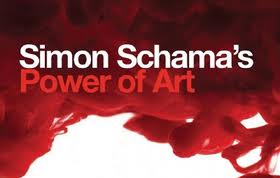
Simon Schama's Power of Art is an eight-part BBC TV mini-series examining the works of eight artists, the context surrounding one of their works and the message they intended to convey with these. It was written, created, narrated, and presented by Simon Schama. The series was first broadcast in October 2006 on BBC2, and was aired in multiple countries from 2006 to 2008, even being translated to Persian and Italian. The series is presented in chronological order with the oldest artists being the earliest episodes and the most recent artists being the last episodes. The series looks at the following artists and works:
- Caravaggio – David with the Head of Goliath
- Bernini – Ecstasy of Saint Teresa (1657)
- Rembrandt – The Conspiracy of Claudius Civilis (1662)
- David – The Death of Marat (1793)
- Turner – The Slave Ship (1840)
- Van Gogh – Wheatfield with Crows (1890)
- Picasso – Guernica (1937)
- Rothko – Black on Maroon (1958)
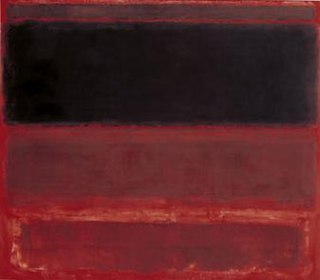
Four Darks in Red is a 1958 painting by American painter Mark Rothko. It is currently in the collection of the Whitney Museum of American Art in New York City.
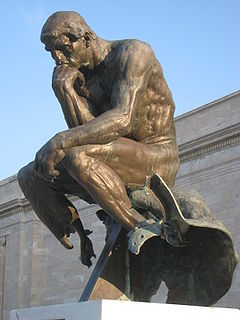
Vandalism of art is intentional damage of an artwork. The object, usually exhibited in public, becomes damaged as a result of the act, and remains in place right after the act. This may distinguish it from art destruction and iconoclasm, where it may be wholly destroyed and removed, and art theft, or looting.
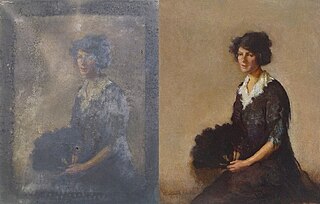
Accidental damage of art refers to damage or destruction of an artwork as a result of various types of accidents. Damage accidents sometimes occur during exhibition or transportation. Attempts at restoration have also damaged artworks, either by expert restorers using techniques that are found decades later to be unsuitable or harmful, or simple botches by unskilled people.
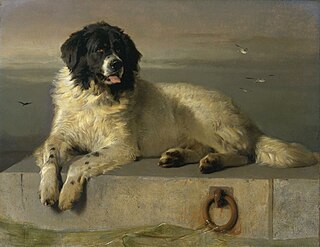
A Distinguished Member of the Humane Society is an 1831 oil on canvas work by English painter Sir Edwin Henry Landseer depicting a Newfoundland dog. The original was damaged in a flood whilst on loan to the Tate Gallery in 1928, and was returned to public view for the first time in 50 years after it was restored in 2009.
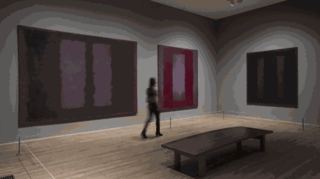
The Seagram murals are a series of paintings by Mark Rothko, his first to experiment with a dark palette. The paintings were originally commissioned for The Four Seasons Restaurant in New York City's Seagram Building. Rothko intended for the dark paintings to sicken the restaurant's patrons. After visiting the restaurant where his paintings were to hang, he canceled and returned his first commission. The paintings were stored and later donated some to the Tate. Rothko made 30 in the series in his lifetime.
The conservation and restoration of ancient Greek pottery is a sub-section of the broader topic of conservation and restoration of ceramic objects. Ancient Greek pottery is one of the most commonly found types of artifacts from the ancient Greek world. The information learned from vase paintings forms the foundation of modern knowledge of ancient Greek art and culture. Most ancient Greek pottery is terracotta, a type of earthenware ceramic, dating from the 11th century BCE through the 1st century CE. The objects are usually excavated from archaeological sites in broken pieces, or shards, and then reassembled. Some have been discovered intact in tombs. Professional conservator-restorers, often in collaboration with curators and conservation scientists, undertake the conservation-restoration of ancient Greek pottery.

Melinda H. Keefe is a research and development director at the Dow Chemical Company, where she works on architectural coatings. She helped to develop the award-winning Evoque pre-composite polymer platform, reducing TiO
2 usage.
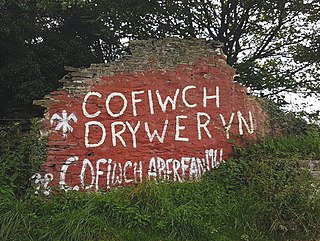
Cofiwch Dryweryn or Wal Cofiwch Dryweryn is a graffitied stone wall near Llanrhystud, Ceredigion, Wales. Author and journalist Meic Stephens originally painted the words onto the wall of a ruined cottage in the early 1960s following the decision by the Liverpool City Council to flood the Tryweryn Valley, including the community of Capel Celyn to create the Llyn Celyn reservoir. Due to its prominent location, stark message, and history of repeated vandalism, the wall has become an unofficial landmark of mid Wales. The phrase "Cofiwch Dryweryn" has itself become a prominent political slogan for Welsh nationalism, appearing on T-shirts and banners, and as replica murals.
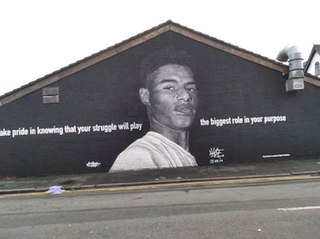
In 2020, a mural of footballer Marcus Rashford by street artist Akse P19 was painted in the Withington area of Manchester, United Kingdom. The mural was created in recognition of the work Rashford did during the COVID-19 pandemic in the United Kingdom to help tackle child food poverty.
















